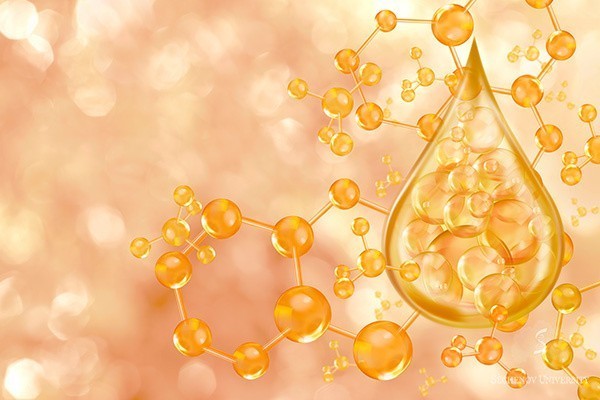-
About University
- Mission & Brand Strategy
- University Leadership
- Rector's Welcome
- History
- Regulatory Documents
- Contacts
- Staff
- International Recruitment
- Partners
Applicants- Why Sechenov University
- Degree Programmes in English
- Preparatory Courses
- Non-Degree Programmes
- Transfer from other Institutions
25.03.2020New way to trace nanoparticles in skin
 Researchers from Sechenov University together with their colleagues from Australia conducted a series of experiments with upconversion luminescent nanoparticles and various models of human skin to determine how many nanoparticles penetrated the skin and how quickly and deep they moved. This method may help in future modelling of skin-nanomaterials interactions and contribute to the replacement of animal testing of nanoproducts such as drugs and cosmetics. The article with the results of experiments was published in Colloids and Surfaces B: Biointerfaces.
Researchers from Sechenov University together with their colleagues from Australia conducted a series of experiments with upconversion luminescent nanoparticles and various models of human skin to determine how many nanoparticles penetrated the skin and how quickly and deep they moved. This method may help in future modelling of skin-nanomaterials interactions and contribute to the replacement of animal testing of nanoproducts such as drugs and cosmetics. The article with the results of experiments was published in Colloids and Surfaces B: Biointerfaces.
Nanoparticles can outperform medicines in traditional form in many ways. They allow an extra degree of control when applied locally and then activated to deliver drugs or diagnostic agents to the given part of the body at the given time This improves the accuracy and safety of the treatment even more. One of the most promising and desired ways of delivering nanoparticles is through the intact skin. But the practical method to accurately estimate the penetration of nanoparticles is yet to be found.
The delivery of medicines through the skin is easier and more effective compared with other ways. First, it is painless in contrast to intravenous or intramuscular injection. Second, medicines that penetrate through the skin are not exposed to stomach acid, faced by drugs for oral administration. However, to enter the skin molecules need to move through the stratum corneum, the outermost layer of the skin composed of dead cells (it protects the organism against infections and injury, helping to maintain water balance). The delivery of medicines into the deeper layers of the skin is possible using nanoparticles. Their ability to penetrate the stratum corneum depends on their size, structure, chemical composition and surface charge, as well as on the properties of the patient skin.
To help nanoparticles move through the stratum corneum, a therapist may use massage, microneedles, ultrasound as well as spirits like ethanol that accelerate diffusion. Then, to assess the efficacy of different methods it is needed to trace the mobility of particles deep in the skin layers with great precision. There are several techniques that enable researchers to do this: scanning electron microscopy, transmission electron microscopy and synchrotron-based X-ray fluorescence. But in most cases they are expensive and labour-intensive, and require lots of specimens, complex laboratory procedures and animal experiments.
The authors of the paper suggested an alternative approach based on the usage of optical microscopy and upconversion nanoparticles. Due to their unique chemical structure, these nanoparticles can absorb a large number of low-energy photons and glow by emitting photons of higher energy. In practice it looks like radiating light with smaller wavelength than that of the consumed light, e.g. emitting visible light after absorbing infrared – this phenomenon is called upconversion. Human and animal tissues as well as most fluorescent compounds cannot glow in this manner, allowing upconversion nanoparticles to be distinguishable even inside organs (at a depth up to 1 cm). Like many other nanoparticles, upconversion ones can be used for the delivery of medicines and are considered as a promising contrast agent and a good model to study the behaviour of various nanosized materials inside the skin.
‘To my mind, this study makes an important contribution to our understanding of interaction between nanoparticles and living cells and tissues. Moreover, to gain this knowledge we had to develop new techniques and perform a series of unique experiments. In particular, we assessed precisely to what depth particles can penetrate intact skin. This is extremely important for the creation of transdermal medicines based on nanoparticles. What is more, we used a tissue engineering model in order to evaluate the safety of upconversion nanoparticles – and did this without animal testing!’ said Dr Anna Guller, coauthor of the paper, senior scientist in the Institute for Regenerative Medicine, Sechenov University.
Researchers put a mix of upconversion nanoparticles and various penetration enhancers (ethanol, oil, water and their mixtures) on skin samples and measured luminescence properties of the particles moved into the skin to a different depth. For the experiment scientists used excess skin that was taken from patients during plastic surgery (obtained with all necessary ethical permissions). The experiment allowed to determine which compounds enhance and which, on the contrary, impede penetration through the stratum corneum. It turned out that under certain conditions particles can accumulate in live epidermis, under the stratum corneum, or even in deeper layers. To trace penetration, scientists used confocal laser-scanning microscope and mass spectrometry.
Now, knowing that upconversion nanoparticles can accumulate in the deep layers of epidermis and in the upper derma, scientists tried to determine how safe their medical application would be. Normally, to do this, researchers put nanoparticles on the skin of laboratory animals and after some time take samples in areas exposed to the impact. The authors of the paper showed that this goal can be achieved without animal experiments. They cultivated multilayer living human epidermis and proved that in the three-dimensional structure upconversion nanoparticles are not toxic.
The study as a whole suggests a way to ease and speed up the trials of new nanomedicines, diagnostic products and cosmetics, designed to be put on skin, as well as to control the permeability of the stratum corneum and reduce the need for animal models.
‘We proved that in a living skin upconversion nanoparticles are safe; and we were happy to get these results since earlier we had carried out studies on epidermal cells cultured as a monolayer in Petri dishes and observed worrying signs – some kinds of particles caused notable cell damage. So, it turned out that within a living tissue cells become much more resistant to potential toxicity of nanoparticles. Whether this phenomenon is unique for upconversion nanoparticles or can it be observed in many types of nanomaterials remains to be clarified. But, in my opinion, this work gives hope and maybe offers a prospect of a wide application of upconversion nanoparticles in dermatology and oncodermatology,’ added Dr Anna Guller.Embed on website
New way to trace nanoparticles in skin
Researchers from Sechenov University together with their colleagues from Australia conducted a series of experiments with upconversion luminescent nanoparticles and various models of human skin to determine how many nanoparticles penetrated the skin and how quickly and deep they moved. This method may help in future modelling of skin-nanomaterials interactions and contribute to the replacement of animal testing of nanoproducts such as drugs and cosmetics. The article with the results of experiments was published in Colloids and Surfaces B: Biointerfaces.
Nanoparticles can outperform medicines in traditional form in many ways. They allow an extra degree of control when applied locally and then activated to deliver drugs or diagnostic agents to the given part of the body at the given time This improves the accuracy and safety of the treatment even more. One of the most promising and desired ways of delivering nanoparticles is through the intact skin. But the practical method to accurately estimate the penetration of nanoparticles is yet to be found.
The delivery of medicines through the skin is easier and more effective compared with other ways. First, it is painless in contrast to intravenous or intramuscular injection. Second, medicines that penetrate through the skin are not exposed to stomach acid, faced by drugs for oral administration. However, to enter the skin molecules need to move through the stratum corneum, the outermost layer of the skin composed of dead cells (it protects the organism against infections and injury, helping to maintain water balance). The delivery of medicines into the deeper layers of the skin is possible using nanoparticles. Their ability to penetrate the stratum corneum depends on their size, structure, chemical composition and surface charge, as well as on the properties of the patient skin.
To help nanoparticles move through the stratum corneum, a therapist may use massage, microneedles, ultrasound as well as spirits like ethanol that accelerate diffusion. Then, to assess the efficacy of different methods it is needed to trace the mobility of particles deep in the skin layers with great precision. There are several techniques that enable researchers to do this: scanning electron microscopy, transmission electron microscopy and synchrotron-based X-ray fluorescence. But in most cases they are expensive and labour-intensive, and require lots of specimens, complex laboratory procedures and animal experiments.
The authors of the paper suggested an alternative approach based on the usage of optical microscopy and upconversion nanoparticles. Due to their unique chemical structure, these nanoparticles can absorb a large number of low-energy photons and glow by emitting photons of higher energy. In practice it looks like radiating light with smaller wavelength than that of the consumed light, e.g. emitting visible light after absorbing infrared – this phenomenon is called upconversion. Human and animal tissues as well as most fluorescent compounds cannot glow in this manner, allowing upconversion nanoparticles to be distinguishable even inside organs (at a depth up to 1 cm). Like many other nanoparticles, upconversion ones can be used for the delivery of medicines and are considered as a promising contrast agent and a good model to study the behaviour of various nanosized materials inside the skin.
‘To my mind, this study makes an important contribution to our understanding of interaction between nanoparticles and living cells and tissues. Moreover, to gain this knowledge we had to develop new techniques and perform a series of unique experiments. In particular, we assessed precisely to what depth particles can penetrate intact skin. This is extremely important for the creation of transdermal medicines based on nanoparticles. What is more, we used a tissue engineering model in order to evaluate the safety of upconversion nanoparticles – and did this without animal testing!’ said Dr Anna Guller, coauthor of the paper, senior scientist in the Institute for Regenerative Medicine, Sechenov University.
Researchers put a mix of upconversion nanoparticles and various penetration enhancers (ethanol, oil, water and their mixtures) on skin samples and measured luminescence properties of the particles moved into the skin to a different depth. For the experiment scientists used excess skin that was taken from patients during plastic surgery (obtained with all necessary ethical permissions). The experiment allowed to determine which compounds enhance and which, on the contrary, impede penetration through the stratum corneum. It turned out that under certain conditions particles can accumulate in live epidermis, under the stratum corneum, or even in deeper layers. To trace penetration, scientists used confocal laser-scanning microscope and mass spectrometry.
Now, knowing that upconversion nanoparticles can accumulate in the deep layers of epidermis and in the upper derma, scientists tried to determine how safe their medical application would be. Normally, to do this, researchers put nanoparticles on the skin of laboratory animals and after some time take samples in areas exposed to the impact. The authors of the paper showed that this goal can be achieved without animal experiments. They cultivated multilayer living human epidermis and proved that in the three-dimensional structure upconversion nanoparticles are not toxic.
The study as a whole suggests a way to ease and speed up the trials of new nanomedicines, diagnostic products and cosmetics, designed to be put on skin, as well as to control the permeability of the stratum corneum and reduce the need for animal models.
‘We proved that in a living skin upconversion nanoparticles are safe; and we were happy to get these results since earlier we had carried out studies on epidermal cells cultured as a monolayer in Petri dishes and observed worrying signs – some kinds of particles caused notable cell damage. So, it turned out that within a living tissue cells become much more resistant to potential toxicity of nanoparticles. Whether this phenomenon is unique for upconversion nanoparticles or can it be observed in many types of nanomaterials remains to be clarified. But, in my opinion, this work gives hope and maybe offers a prospect of a wide application of upconversion nanoparticles in dermatology and oncodermatology,’ added Dr Anna Guller.



